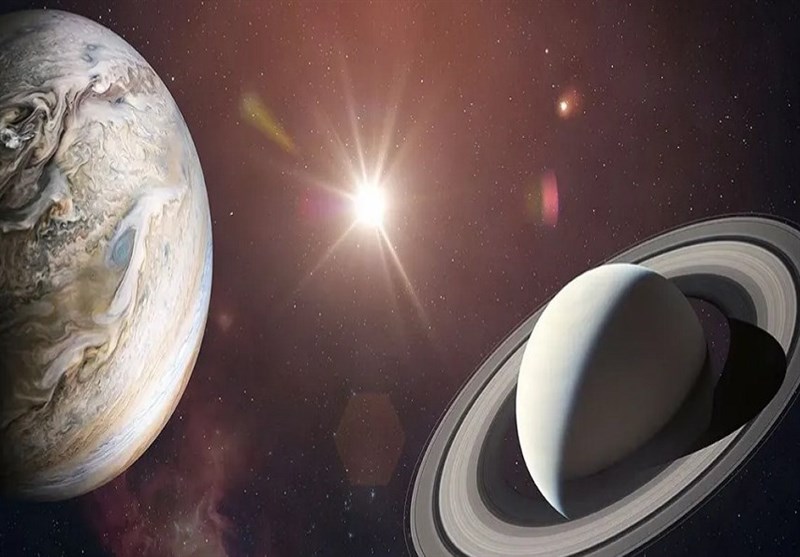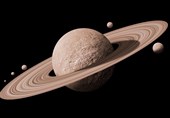Computer Model May Have Figured Out Why Saturn Has Rings But Jupiter Doesn't
TEHRAN (Tasnim) – Jupiter, the fifth planet in our solar system and by far most massive, is a treasure trove of scientific discovery. Last year a pair of studies found that the planet's iconic Great Red Spot is 40 times deeper than the Mariana Trench, the deepest location on Planet Earth.
In April authors of a paper in the journal Nature Communications studied a double ridge in Northwest Greenland with the same gravity-scaled geometry as those found on Europa, one of Jupiter's moons, and concluded that the probability of life on Europa is greater than expected.
Now scholars believe they have cracked another great Jupiter mystery — namely, why it lacks the spectacular rings flaunted by its celestial neighbor, Saturn. As a very massive gas giant with similar composition, the evolution of the two planets is believed to be similar — meaning the reason that one has a prominent ring system and the other doesn't has always been something of a puzzle.
With results that are currently online and will soon be published in the journal Planetary Science, researchers from the University of California–Riverside used modeling to determine that Jupiter's enormous moons nip the creation of possible rings right in the bud.
Using a computer simulation that accounted for the orbits of each of Jupiter's four moons, astrophysicist Stephen Kane and graduate student Zhexing Li realized that those moons' gravity would alter the orbit of any ice that might come from a comet and ultimately prevent their accumulation in such a way as to form rings, as happened with Saturn. Instead the moons would either fling the ice away from the planet's orbit or pull the ice toward a collision course with themselves.
This not only explains why Jupiter only has the paltriest of rings at present; it suggests that it likely never had large rings.
There is more at stake here than merely understanding why the aesthetics of Jupiter differ from the aesthetics of Saturn. As Kane explained in a statement, a planet's rings contain many clues about that planet's history. They can help scientists understand what objects might have collided with a planet in the past, or perhaps the type of event that formed them.
"For us astronomers, they are the blood spatter on the walls of a crime scene. When we look at the rings of giant planets, it's evidence something catastrophic happened to put that material there," Kane explained.
The scientists say they do not plan on ending their astronomical investigation at Jupiter; their next stop is Uranus, which also has paltry rings. The researchers speculate that Uranus, which appears to be tipped on its side, may lack rings because of a collision with another celestial body.
Technically, Jupiter does have a ring system, it is just incredibly small and faint. Indeed, Jupiter's rings are so small that scientists did not even discover them until 1979, when the space probe Voyager passed by the gas giant. There are three faint rings, all of them made of dust particles emitted by the nearby moons — a main flattened ring that is 20 miles thick and 4,000 miles wide, an inner ring shaped like a donut that is more than 12,000 miles thick and a so-called "gossamer" ring that is actually comprised of three much smaller rings comprised of microscopic debris from the nearby moons.
NASA itself has expressed wonderment at the wispy rings that accompany our solar system's most conspicuous behemoth — in particular, at the size of the particles that comprise them.
"These grains are so tiny, a thousand of them put together are only a millimeter long," NASA writes. "That makes them as small as the particles in cigarette smoke."
By contrast, the rings of Saturn are famously beautiful, and some of the particles in those rings are "as large as mountains." When the space probe Cassini finally got an up-close look at Saturn's rings, it found "spokes" longer than the diameter of Earth and potentially made of ice — as well as water jets from the Saturnian moon Enceladus, which would provide much of the material in the planet's E ring.






